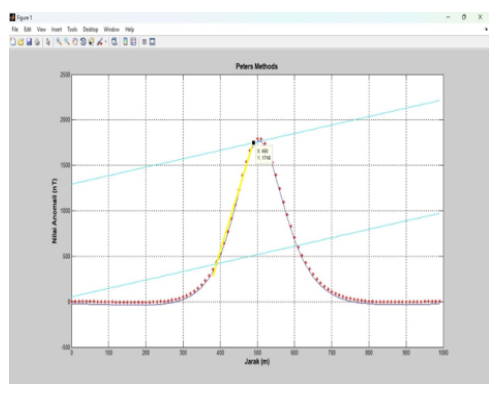Effectiveness of The Peter Half Slope Method in Determining The Depth of Anomalous Objects
DOI:
https://doi.org/10.56099/jrgi.v5i03.7Keywords:
Peter Half Slope, efektivitas, forward modellingAbstract
The Peter Half Slope method is one of several techniques that can be used as the earliest quantitative depth determination. It is hoped that through this research the literature on the Peter Half Slope method can increase. This research aim is to prove the effectiveness of the Peter Half Slope method in estimating the depth of subsurface anomalous objects through comparison of models (synthesis) that have not and have been added random values as error values. This research begins with modeling in Geomodel software. After obtaining the appropriate synthetic modeling results, the next step is to perform processing in Matlab software to test the effectiveness of the Peter Half Slope method. After entering all the values, the average value of the anomalous depth of model 1 in d1, d2, and d3 is 100.1890m. As for model 2, the average value of model 2 anomaly depth is 97.35344m. The error between the original modeling and the modeling added random values using the Peter Half Slope method is 2.83%. Thus, this method is considered effective in determining the depth of subsurface anomalies through magnetic response, but to determine the exact depth requires the use of other methods as the main method.
References
Kahfi, R. A., & Yulianto, T. (2008). Identifikasi Struktur lapisan bawah permukaan daerah manifestasi emas dengan menggunakan metode magnetik di Papandayan Garut Jawa Barat. Berkala Fisika, 11(4), 127-135.
Cahdriyana, R. A., & Richardo, R. (2020). Berpikir komputasi dalam pembelajaran matematika. LITERASI (Jurnal Ilmu Pendidikan), 11(1), 50-56. JURNAL GEOSAINTEK
Rasimeng, S. (2020). Lembar Plagiarism: Forward modelling Metode Gayaberat Dengan Model Intrusi dan Patahan Menggunakan Octave.
Kayode, J. S., Adelusi, A. O., & Nyabeze, P. K. (2013). Interpretation of ground magnetic data of Ilesa, Southwestern Nigeria for potential mineral targets. Adv Appl Sci Res, 4(1), 163-172.
Abdullah, F. (2015). Pendugaan Jenis Batuan Bawah Permukaan Daerah Bendungan Karangkates Menggunakan Metode Geomagnetik (Doctoral dissertation, Universitas Brawijaya).
Risdiasari, F. (2010). Analisis Zona Potensi Panasbumi Daerah Waesekat, Kabupaten Buru Selatan, Maluku Berdasarkan Data Magnetik. Fakultas MIPA UB : Malang.
Telford, W.M., Geldart, L.P. and Sheriff, R.E. (1990) Applied Geophysics. 2nd Edition, Cambridge University Press, Cambridge.
Hadisurya, D. (2018). Identifikasi Magma Chamber berdasarkan Analisis Data Magnetik Total di Gunung Ili Lewotolo Kabupaten Lembata, Nusa Tenggara Timur berdasarkan Data Survei Tahun 2010.
Adegoke, J. A., & Layade, G. O. (2014). Variation of structural index of Peter's half-slope in determining magnetic source-depth. Archives of Physics Research, 5(2), 23-31.

Downloads
Published
How to Cite
Issue
Section
License
Copyright (c) 2023 Jurnal Rekayasa Geofisika Indonesia

This work is licensed under a Creative Commons Attribution 4.0 International License.










